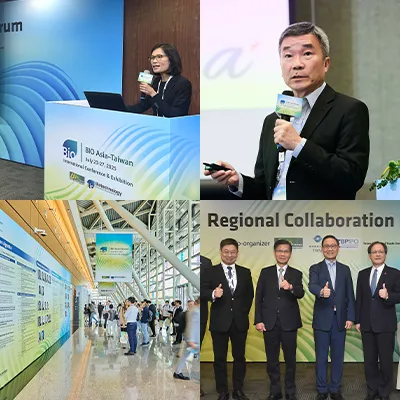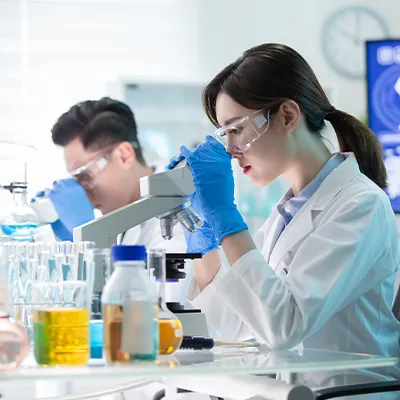Pick an idea out of thousands possible. Devote resources to research it, refine it and then test it. Prototype the product, bring it out to market and then finally manufacture it for the world.
When it comes to this model of innovation, medical devices giant Becton Dickinson (BD) employs it to great effect in Singapore, delivering innovative solutions for the region.
The fruitful partnership between Singapore and BD has in fact been flowering for over 30 years. The company opened its first commercial office in Singapore in 1987 and set up a manufacturing plant in the Republic in 1989. Over the years, the company, which currently employs about 1,400 people here, has slowly expanded its presence, adding new functions to its facilities. Today Singapore is one of the company’s most important outposts, functioning as its regional headquarters, its largest global manufacturing and main research and development base in Greater Asia.
And when it comes to innovation, the tried and tested process at BD works well says Dr David Capes, BD’s Vice President of Research and Development in Greater Asia.
“Innovation is finding out how we can add value to what society needs, in our case in healthcare,” he says.
The science of innovation
Founded in 1897, BD started out as a medical device import firm and introduced its first injection device in 1905. More than 20 years later, in 1924, it manufactured its first syringe made specifically for insulin injection. And since then, the company, with turnover of US$12.5 billion last year, has created numerous products that have helped solve major problems in medical technology, from syringes to blood collection tubes and needles.
At BD, the process of innovation begins with its innovation team carefully filtering out the best and most practical ideas from thousands they come across.
The process of filtering through these ideas starts by observing the company’s customers, says Dr Capes, who is based in Singapore, BD’s Greater Asia research and development base.
“A good place to start is with customers. Talking to customers, visiting customers, spending time with them and observing what they do,” he said explaining that this is a process that the BD Singapore team rigorously follows.
“You see the problems they have, and then you come up with the solution for the problem. People want solutions to their problems or their needs, but may not be able to articulate it. That’s where we come in.”
At this stage, the team overlays the problem with trend analysis. For instance, even though there may be a disease that is currently a big problem in Asia, it may be a declining trend because diagnosis and treatment is already improving. So it may not be an area in which BD is looking to invest in for the long term.
Small teams consisting of people from marketing and market research functions then assess the viability of a few ideas and move them to the next stage.
This process of funnelling the ideas will eventually result in a handful of potential products that the company believes will make a difference in the market.
Prototypes get built and used in trials to test its efficacy in real-world situations. Finally, when all the tests have been done, the company moves into manufacturing mode and the product, after it passes the regulatory tests, is brought to the wider market.
Innovating in this manner can take several years to see through the development of a product, however, this tried and tested method has been bringing the company a steady stream of new products.
“Think big, then start small, de-risk it and test it until you perfect it,” says Dr Capes, pausing for a second.
“Then scale as quickly as you can.”
Singapore’s impact on BD’s innovation
Under this model of innovation, Singapore has delivered strong results for the company. Among the products that have been developed here include, BD Vacutainer® Flashback Blood Collection Needle, which was created in the early 2000s. The needle, which makes it easy for anyone to draw blood by using a visual aid, is selling close to 85 million pieces a year.
One of the latest products that BD is working on in Singapore is the BD Odon Device™, a birth assistance tool that was invented by an Argentinian car mechanic. (See sidebar)
Undertaking research projects such as the Flashback needle in Singapore makes sense, said Dr Capes.
It sits in the middle of Asia, which is our fastest growing market. The market for medical devices in the APAC region is estimated to be US$55 billion, forming a quarter of the total global US$230 billion, according to a UBM Canon MedTech World report.
But more than that, Dr Capes said that its innovation efforts in Singapore is geared towards the region. To do this well, getting to places in and around Asia and understanding it becomes crucial.
“Singapore is a good place to do business in general and a very international place,” says Dr Capes, adding that the island is also safe and convenient for BD’s staff to work.
For instance, research often delves into the more rural parts of big countries such as China, Indonesia and India. Understanding how healthcare works in those geographies is critical to developing solutions and not simply products, said Dr Capes.
At the same time, the country’s intellectual property regime remains robust, a big plus for any company doing serious R&D work.
“The intellectual property is also safe and we've had strong support from Singapore’s Economic Development Board, who has helped us a lot every time. So it's a good ecosystem in Singapore and it is continuing to improve.”
Singapore’s strong research and development community has also aided BD’s efforts in developing new partnerships for innovation. The company has been a corporate sponsor of the Singapore Stanford Biodesign Programme since 2012. The programme, a collaboration between EDB, A*STAR and Stanford University, is designed to meet the industry’s need for medtech innovators who are familiar with the region’s unique clinical and market needs.
The rise of Singapore’s tech start-up scene is likewise also proving to be a boon for companies like BD, said Dr. Capes. The vibrant health IT sector is providing fertile ground for big companies looking to partner smaller firms, which are eyeing the next breakthrough in medtech.
“If it is in an area we know something about then yes. We can help them when they get past the iteration phase and are ready to scale,” he says.
“The ideas come from the smaller companies. They are more flexible that way. But beyond that, it's how you take these inventions, new technologies and scale them up. And this is the particular skill that we have.”
For Dr Capes, innovation is taking incremental steps to making things better for everyone. It’s taking a product like a needle, improving it to make it easier to use and safer for healthcare practitioners. That’s the real value to society, he says.
Likewise, even big innovators of our time, including Steve Jobs (founder of Apple) and Mark Zuckerberg (founder of Facebook) probably took a specific problem and tried to fix it, rather than create something out of nothing, he notes.
“I don't think Steve Jobs (founder of Apple) set out to create a massive company. None of them, including Facebook, set out to do any of that. All they did was think: Look, here is something cool, or here is a problem we can solve. That's what drives innovation,” he adds.
Sidebar
An invention perfected by innovation
To remove a cork from inside a wine bottle: Place a plastic bag inside the wine bottle, trap the cork inside the bag by inflating the bag and then pull it out, which will in turn drag the cork along with it.
That simple parlour trick is used by thousands around the world to impress their friends at the local bar. But it also served as the inspiration for a life-saving device, invented by Argentine car mechanic Jorge Odon.
Mr Odon realised the same idea could be applied to save a baby stuck in the birth canal. He built his first prototype in his kitchen, using a glass jar for a womb, his daughter’s doll for the trapped baby, and a fabric bag and sleeve sewn by his wife as his device.
The most unlikely of ideas won the enthusiastic support of the World Health Organisation and multiple research grants. The BD Odon Device™, named after the inventor, was also licensed for production by BD.
As an idea, the Odon Device™ is a brilliant one, a low-cost and low-risk solution that could save millions of babies, especially in third world countries. But it was not yet suited for manufacturing and production. That’s where BD’s Singapore team came in.
BD took on the project to develop it back in 2013 and the efforts were led by the Singapore team, said Ms Lim Wan Leng, Core Team Leader at BD’s Research and Development unit.
Before such a device can be used on people, it has to be vigorously tested and pass multiple tests.
“When they gave the prototype to us, they actually thought it was almost a complete product. But we told them sorry, no. We need to go back and get it configured based on proper scientific procedures so as to lower any potential risks,” she said.
Singapore took the lead partly because the device had big benefits for developing countries in the region like India. It was the first time the team in Singapore was dealing with such a project – but that did not stop them from handling this global project.
Over the past three years, the team has since been making multiple connections with doctors in the UK, hospitals in Europe as well as academics in Singapore to improve the device to get it ‘market-ready’.
“So we needed to get other people to help finalize the design, and we brought our skillset, of designing products for scale” said Dr David Capes Vice President Research and Development for Greater Asia. The next step is to run clinical trials which will be held in Europe and Africa and after which the company is planning to launch the Odon Device™ officially in the markets.







